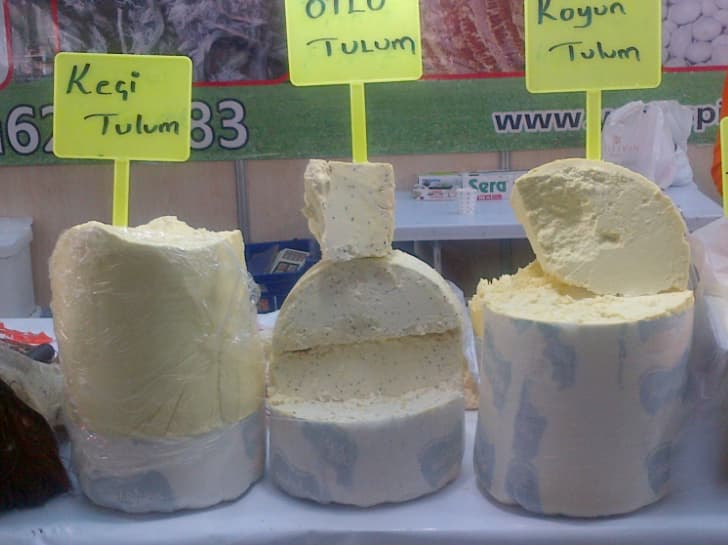
Cheese is the most diverse dairy product in the world. It is likely that Asian nomads were the first to discover cheese. The nomads, who received almost all of their livelihoods from the animals they fed, used the animal’s tripe or untanned leather bags to store food. Milk turns into cheese thanks to the enzyme of renin in the tripe. In the excavations carried out by archaeologists, perforated containers were found for cheese making in the 4,000 and 6,000 BC, and it is thought that the curd was used to drain the water. Some preservation ways have been found for the use of cheese, which is so old in history, for a long time. One of these ways of protection has been to put it in animal hide.
Sheep cheese made of animal hide is the name given to various regions of Turkey to the specific cheese. Natural contaminant microorganisms, especially molds, develop during ripening and contribute to the ripening process. The maturation process is provided by holding in potholes, caves, cellars or cold storage rooms as it has become widespread in recent years. Tulum cheese is traditionally matured in overalls made from goat or sheepskin.
Tulum cheese varies according to the region where it is produced. Tulum cheese produced in Konya, Bingöl, Erzincan, Elazığ, Tunceli and Erzurum regions is called Erzincan tulumu or Şavak cheese. Tulum cheese made in Çankırı and Çorum regions is known as pike tulumu. There is also a type of pickled tulum cheese made in the Aegean Region and is known as Izmir Tulum cheese. There is another type belonging to Bergama. In addition, tulum cheese is produced in the Koçkar village plateau in the Kemah district of Erzincan.
Tulum cheese is usually produced by traditional methods in small family businesses and primitive dairies. Today, tulum cheese, which has gained the admiration of almost every segment, has started to be produced in larger and modern enterprises and in large quantities over time.
tulum-cheese image source wikipedia
